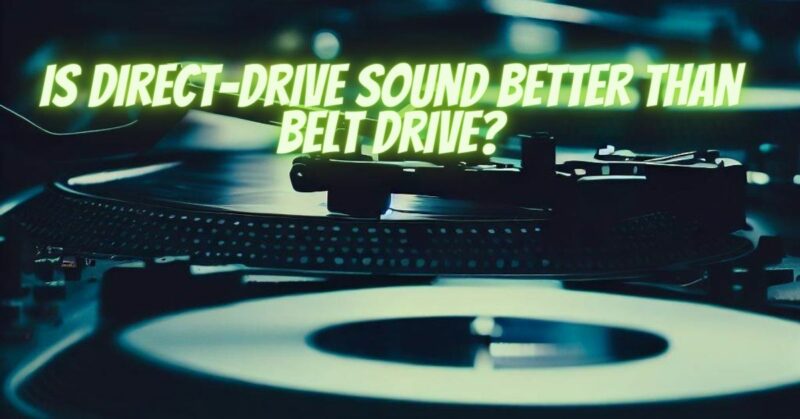The choice between direct-drive and belt-drive turntables has long been a subject of debate among audiophiles and vinyl enthusiasts. Central to this discussion is the question of whether direct-drive turntables offer superior sound quality compared to their belt-drive counterparts. This article aims to unravel the complexities of both drive mechanisms, exploring their impact on sound quality and helping you make an informed decision when choosing a turntable.
Direct-Drive Turntables
Mechanism: In a direct-drive turntable, the platter is directly connected to the motor, eliminating the need for an intermediary belt. The motor is positioned under the platter, resulting in stable rotation and precise speed control.
Advantages:
- Consistent Speed: Direct-drive turntables offer consistent and stable rotational speed, making them ideal for DJ applications and critical listening.
- Quick Start and Stop: Direct-drive mechanisms allow for quick start and stop times, crucial for DJs and turntablists.
Belt-Drive Turntables
Mechanism: In a belt-drive turntable, the motor is positioned away from the platter and connected via a rubber belt. The belt absorbs motor vibrations and provides isolation, reducing potential mechanical noise.
Advantages:
- Isolation: Belt-drive mechanisms reduce motor vibrations that could impact sound quality, potentially resulting in cleaner audio reproduction.
- Lower Motor Noise: Since the motor is positioned away from the platter, there’s less potential for motor noise to interfere with playback.
Sound Quality Comparison
The assertion that one drive mechanism inherently provides better sound quality than the other is a nuanced topic:
- Direct-Drive Sound Quality: Direct-drive turntables are often associated with accurate speed control, making them suitable for applications where pitch stability is crucial. However, some direct-drive models might introduce mechanical noise due to the motor’s proximity to the platter.
- Belt-Drive Sound Quality: Belt-drive turntables are believed to offer better isolation from motor vibrations, potentially leading to cleaner sound. The separation of the motor from the platter can reduce the transmission of mechanical noise to the stylus.
Factors Influencing Sound Quality
- Turntable Design: The overall design of the turntable, including the quality of components, tonearm, cartridge, and construction, significantly impacts sound quality.
- Isolation: Both drive mechanisms benefit from proper isolation to minimize vibrations and external disturbances that can affect sound quality.
- Turntable Type: Audiophile-oriented belt-drive turntables often prioritize sound quality over other features, while direct-drive turntables might emphasize speed accuracy for DJ applications.
The assertion that direct-drive turntables offer inherently better sound quality than belt-drive turntables, or vice versa, is not universally accurate. Both mechanisms have their advantages and potential drawbacks. The ultimate sound quality of a turntable is influenced by various factors, including the turntable’s overall design, isolation, cartridge, tonearm, and more. When choosing between direct-drive and belt-drive turntables, it’s essential to consider your specific requirements, preferences, and the overall setup to ensure the best possible vinyl listening experience.


